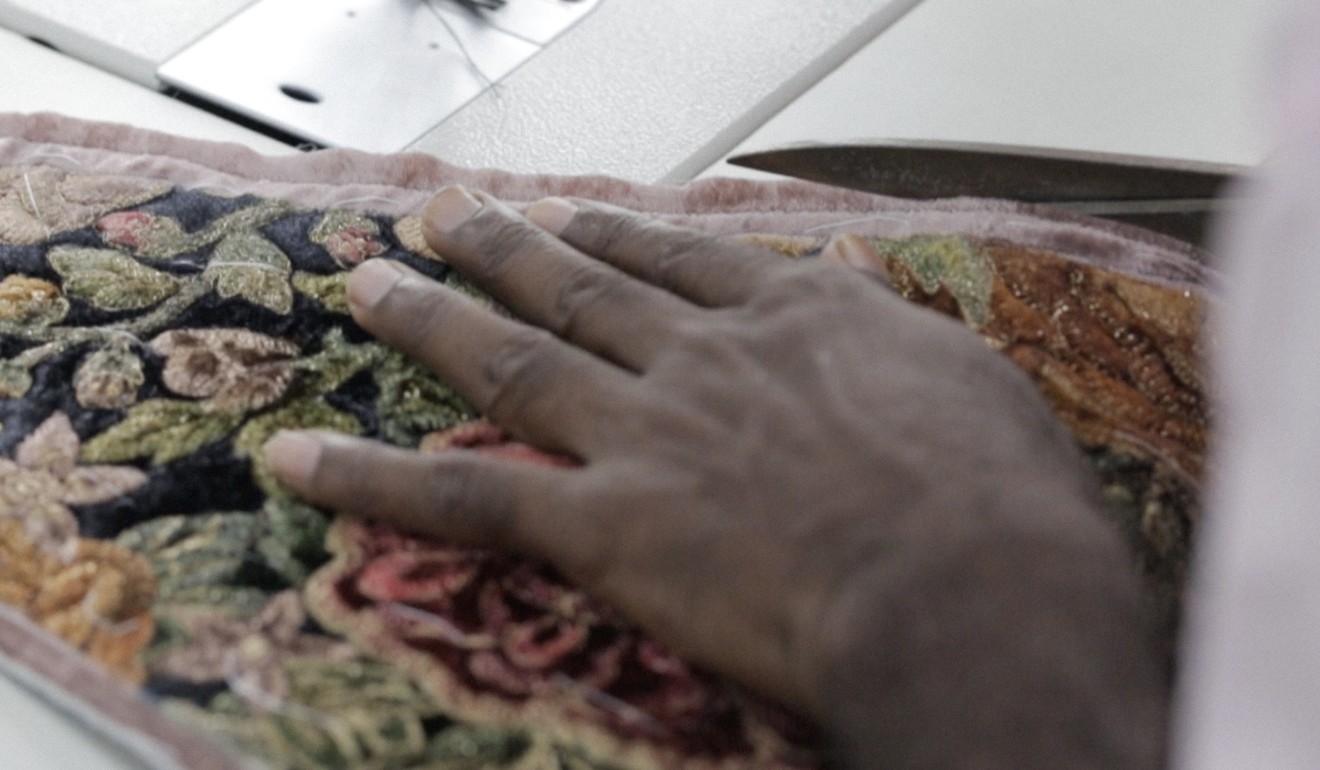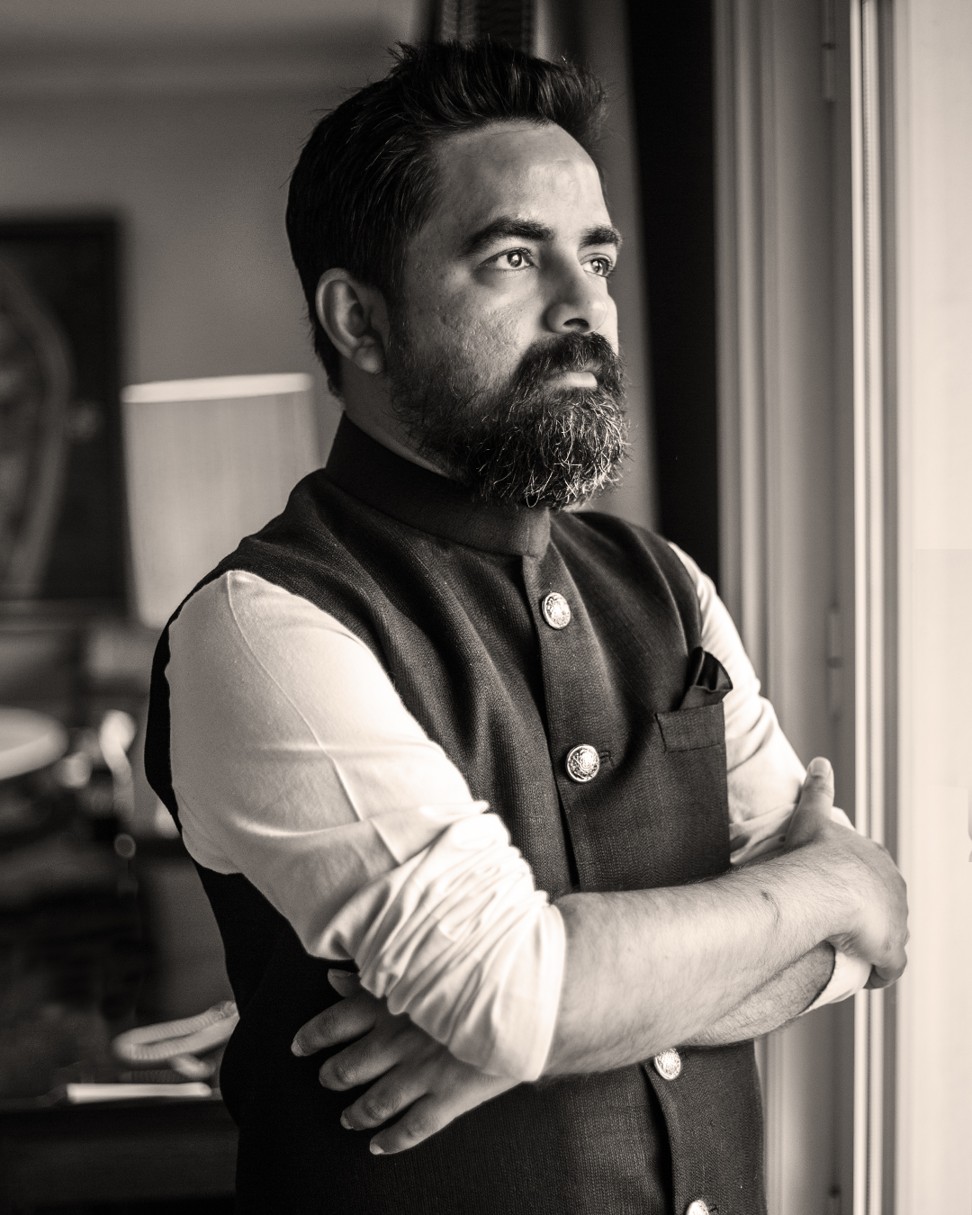
Why Indian fashion designer Sabyasachi Mukherjee is ready to show his ‘Sabya look’ to the world
A super-celebrity in India, Mukherjee has dressed everyone from Bollywood stars to politicians. Now, with his trademark focus on quality materials and craftsmanship, he wants his clothes to be seen by a global audience

It is hard to believe that Sabyasachi Mukherjee is shy. The celebrated Indian designer was in Hong Kong last week to launch his highly anticipated ready-to-wear capsule collection with Lane Crawford (his first after a long hiatus) and unveil his recent collaboration with shoe designer Christian Louboutin. During his short trip in the city he met the media and customers, was feted at various cocktails and dinners, and even partied at nightclub Petticoat Lane.
“Believe it or not, I am a massive introvert,” he says. “I’m great at public speaking or doing interviews, but sit me down with eight people and I am terrified. A lot of us who are very dedicated to craft never make an effort to be social. I go to work at 7am and come back home at 1am. I think I have been successful because I have a very detached view on fashion. I am an outsider.”
Outsider or not, success has come in droves for Mukherjee since he first appeared on the fashion scene in 1999. The Calcutta native, who boasts 1.2 million followers on Instagram, has dressed everyone from Bollywood starlets like Aishwarya Rai and Priyanka Chopra to society girls and politicians.

His designs are revered by Indian brides, who dream of wearing one of his embellished creations on their big day. His boutiques have become meccas for fans looking to bask in his nostalgic take on beauty. Such is his fame that he is often referred to by his first name, much like Oprah, Adele and Madonna (the latter also happens to be one of his favourite singers).

After 18 years of operations in India, however, the designer is ready for a new challenge.
“Many Indian designers don’t go beyond their comfort zone,” he says. “In India I am a super-celebrity but when I travel no one knows who I am. For me it’s exciting to be given an opportunity to start somewhere else. This collection with Lane Crawford just happened so easily. When you just do beautiful things that you believe in, you don’t look for your destiny, it just comes to you.”

Serendipity is a word that Mukherjee uses frequently when talking about his past. Calling himself the black sheep of the family, he first studied medicine, before giving it up to pursue economics (only to drop out later).
He eventually enrolled at the National Institute of Fashion Technology in Delhi, where he was awarded various scholarships, including one to Parsons School of Design in New York (he never went). Intrigued by textiles, he secured an apprenticeship at a small printing factory and later interned in the archives and ateliers of Jean Paul Gaultier and Azzedine Alaia, and at the Victoria & Albert Museum in London.

“While at the museum someone suggested I start exploring the Indian archives, which is where I really started to understand the importance of textiles. It surprised me that so much of what we had available in India was mediocre, yet these archives showcased the incredible craft we had at our doorstep. It was from this simple point of view that I built my business,” he says.

Mukherjee decided to base his atelier in Calcutta, starting with only three artisans. Collection after collection, he began showcasing the best of India’s textile traditions and handicrafts: from block prints and weaves to dyes and embroideries, on old-world silhouettes imbued with a sense of modesty, strictness and romance. It was a style that had never been seen before and it was not long before the “Sabya look” was revolutionising the way Indian women dressed.
“India is such a strong patriarchal society that many women are left with confidence issues. I wanted to tell women that it’s OK to be whatever they want. This triggered an emotional connection with so many – I am not defining women but giving them the power to define themselves,” he says.

Mukherjee’s brand also handed back power to another group of disenfranchised people: the craftsmen of India, many of whom were on the verge of disappearing.
Our motto … is that if a machine can do the work of 10 people, kill the machine and hire the 10 people
Today he employs 3,900 full-time workers who do everything from embroidery and printing to dyeing and steaming. At any given time he also employs 37,000 contractors from across the country to create every fabric or piece of clothing by hand.
“I don’t do a collection like other designers do. For me I am a cook whose menu is dependent on the produce of the day. Depending on what craft I am working on, I build a collection around it. What I do is modernise the craft without over-modernising it so it loses context. I’m a bridge between past and future,” he says.

While many brands tout craftsmanship as one of their values, for Mukherjee it is the foundation upon which his entire business is based.
“What’s going on in India is crazy. Take for example Patan Patola, which is an amazing skill which came out of Gujarat. You would need to be a mathematical genius to weave that fabric. Just to weave a sari takes an entire family one and a half years to complete. There used to be 150 people that specialised in this 10 years ago, now there are three.
“What my brand does is make it commercially viable for people to continue their craft and tradition. Our motto in the company is that if a machine can do the work of 10 people, kill the machine and hire the 10 people. For our bridal outfits alone we employ 35 to 40 people for two months to make one outfit. We make 9,000 bridal outfits a year. That’s a lot of employment,” he says.

Now that Mukherjee has spread his message across India, he has his sights set on the rest of the world. The Lane Crawford collection is the first step in showcasing the best of India’s artisans, and hopefully more are to come.
“I stay in fashion for a singular reason. If a mum wears something beautiful and the daughter wants to know more about it, we are creating craft awareness through generations. I’ve done what I’ve had to do in India, but now it’s important to carry the story to the rest of the world,” he says.
“It’s about time the world got clued into what real luxury is. The future of luxury is anything that’s time-bound and sensitive. A lot of us consume products but we feel a bit vacuous afterwards. You have to consume – otherwise, there is no economy – but [we should] consume knowing that somewhere else a child can go to school. It makes a world of difference.”